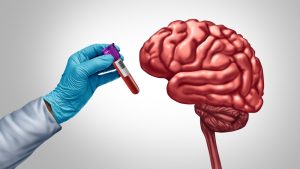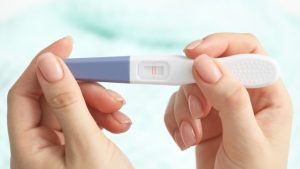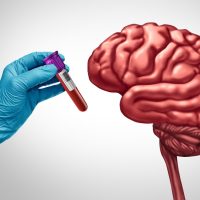Attention-deficit hyperactivity disorder (ADHD) is the most diagnosed childhood neurological disorder in Australia.
Over the years, it has been the subject of controversy about potential misdiagnosis and overdiagnosis. There has also been variation in levels of diagnosis and drug prescription, depending on where you live and your socioeconomic status.
To address these concerns and improve consistency in ADHD diagnosis and prescribing, the Australasian ADHD Professionals Association has released a new prescribing guide. This will help the health-care workforce to consistently get the right treatment to the right people, with the right mix of medical and non-medical supports.
Here’s how ADHD prescribing has changed over time and what the new guidelines mean.
Background
Up to one in ten young Australians experience ADHD. It is diagnosed due to inattention, hyperactivity and impulsivity that has negative effects at home, school or work.
Psychostimulant medication is a central pillar of ADHD treatment.
However, the internationally recognised approach is to combine medicines with non-medical interventions in a multimodal approach. These non-medical interventions include cognitive behavioural therapy (CBT), occupational therapy, educational strategies and other supports.
Medication use has changed over time
In Australia, Ritalin (methylphenidate) was originally the most prescribed ADHD medication. This changed in the 1990s after the introduction of dexamphetamine, along with the subsequent availability of Vyvance (lisdexamfetamine).
Perhaps the most significant change has come with “slow release” versions of the above medications that can last more than eight hours (longer than a school day).
When following clinical guidelines, prescribing medication for ADHD is safe practice. Yet the use of amphetamines to treat young people with ADHD has caused public concern. This highlights the importance of consistent guidelines for prescribing professionals.
Growth in diagnosis and prescribing
Starting from low levels, there was a dramatic rise in diagnosis and drug treatment in the 1990s. Much of this was overseen by a small number of psychiatrists and paediatricians in each state or territory. While this promised the potential of consistency in the early days, it also raised concerns about best practice.
This led to the development of the first ADHD clinical guidelines by the National Medical Health and Research Council in 1997.
It was followed by several refinements as prescription expanded due to changing diagnostic criteria (expanding to include a dual diagnosis with autism) and the need for best practice with the growing prescription by GPs. These guidelines enhanced the consistency of approaches nationally and reduced the likelihood of misdiagnosis or overdiagnosis.
However, a recent Senate inquiry found diagnosis and drug treatment continued to grow substantially in the five years to 2022. It emphasised the need for a more consistent approach to diagnosis and prescribing.
First the ingredients, then the recipe
The most recent clinical guidelines, released by the Australasian ADHD Professionals Association in 2022, outlined a roadmap for ADHD clinical practice, research and policy. They did so by drawing on the lived experience of those with ADHD. They also emphasised broader health questions, such as how to respond to ADHD as a holistic condition.
It remains difficult to predict individual responses to different medication. So the new prescribing guide offers practical advice about safe and responsible prescribing. This aims to reduce the potential for incorrect prescribing, dosing and adjusting of ADHD medication, across different age groups, settings and individuals.
To put this visually, the clinical guidelines describe what the ingredients of the cake should be, while the prescribing guidelines provide step-by-step recipes.
So what do they recommend?
An important principle in both these documents is that medication should not be the first and only treatment. Not every drug works the same way for every child. In some cases they do not work at all.
The possible side effects of medication vary and include poor appetite, sleep problems, headaches, stomach aches, moodiness and irritability. These guidelines assist in adapting medication to reduce these side effects.
Medication provides an important window of opportunity for many young people to gain maximum value from psychosocial and psychoeducational supports. These supports can, among others, include:
- cognitive training
- CBT
- neurofeedback
- occupational therapy
- educational strategies
- ADHD coaching.
Support for ADHD can also include parent training. This is not to suggest parents cause ADHD. Rather, they can support more effective treatment, especially since the rigours of ADHD can be a challenge to even the “perfect” parent.
Getting the right diagnosis
There have been reports of people seeking to use TikTok to self-diagnose, as well as a rise in people using ADHD stimulants without a prescription.
However, the message from these new guidelines is that ADHD diagnosis is a complex process that takes a specialist at least three hours. Online sources might be useful to prompt people to seek help, but diagnosis should come from a qualified health-care professional.
Finally, while we have moved beyond unhelpful past debate about whether ADHD is real to consolidate best diagnostic and prescribing practice, there is some way to go in reducing stigma and changing negative community attitudes to ADHD.
Hopefully in future we’ll be better able to cherish diversity and difference, and not just see it as a deficit.![]()
Brenton Prosser, Professor of Public Policy and Leadership, UNSW Sydney
This article is republished from The Conversation under a Creative Commons license. Read the original article.






















